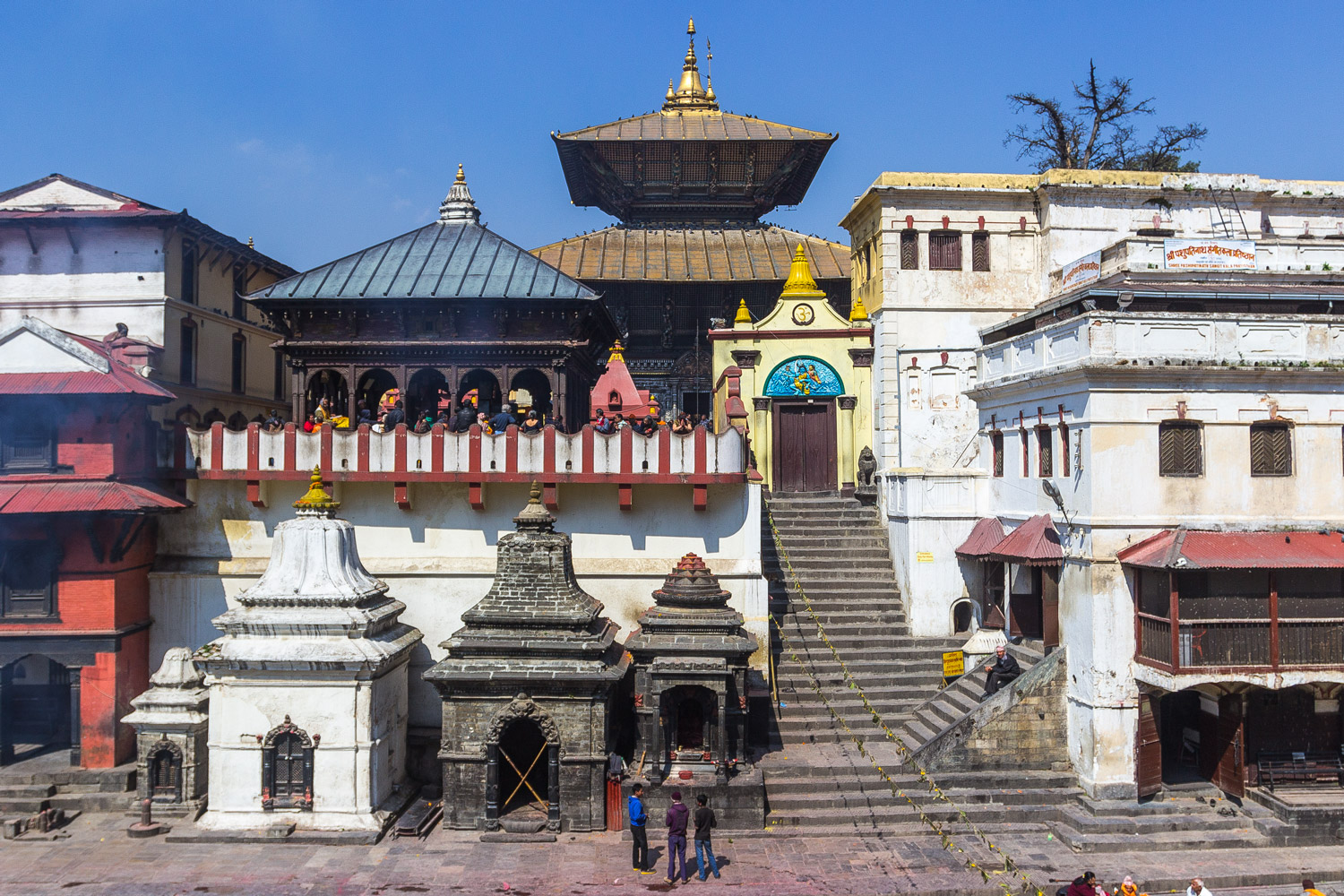Pashupatinath
Pashupatinath is a large Hindu temple in Kathmandu, located on the tributary of the Ganges River, where Indian ritual cremation takes place.

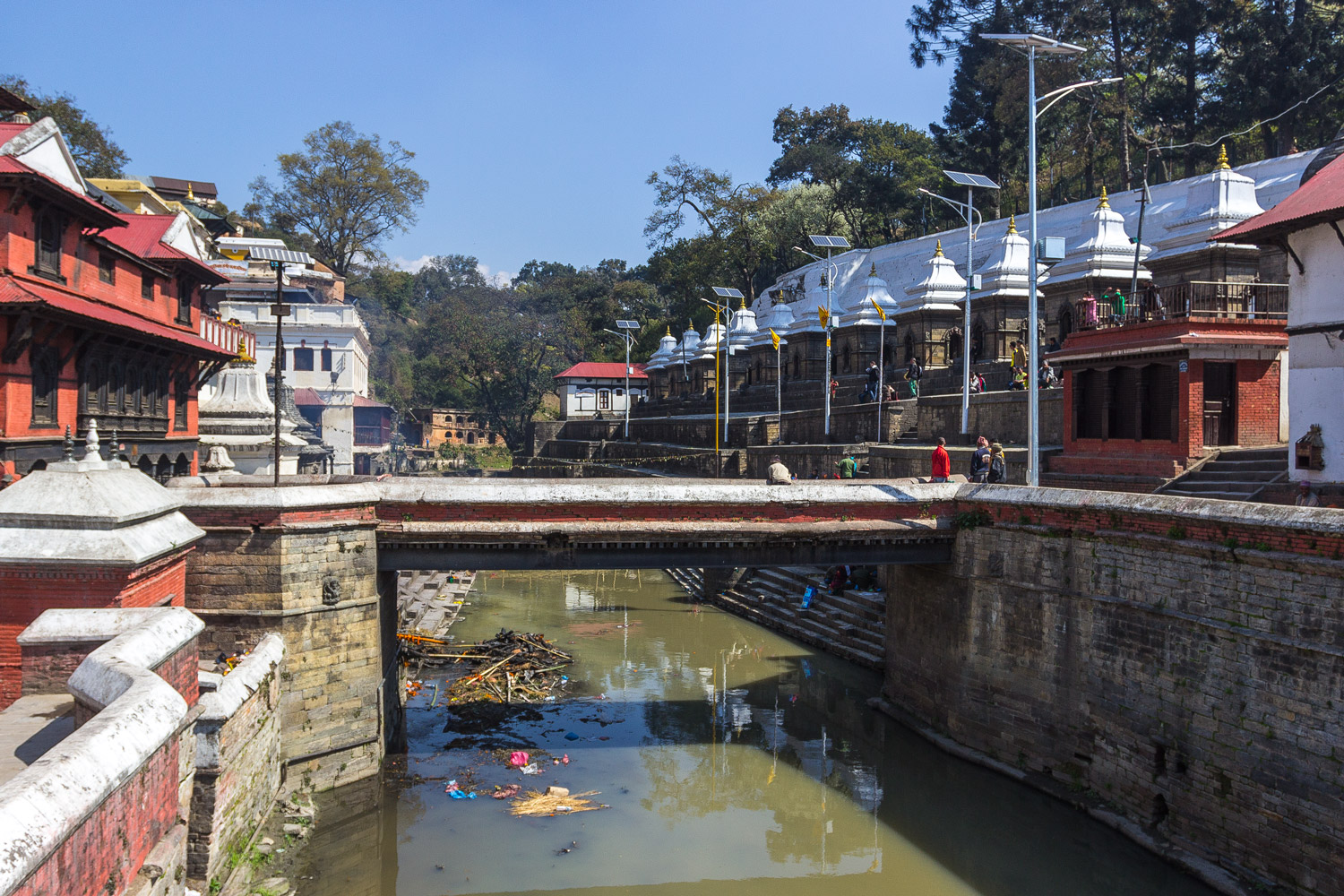
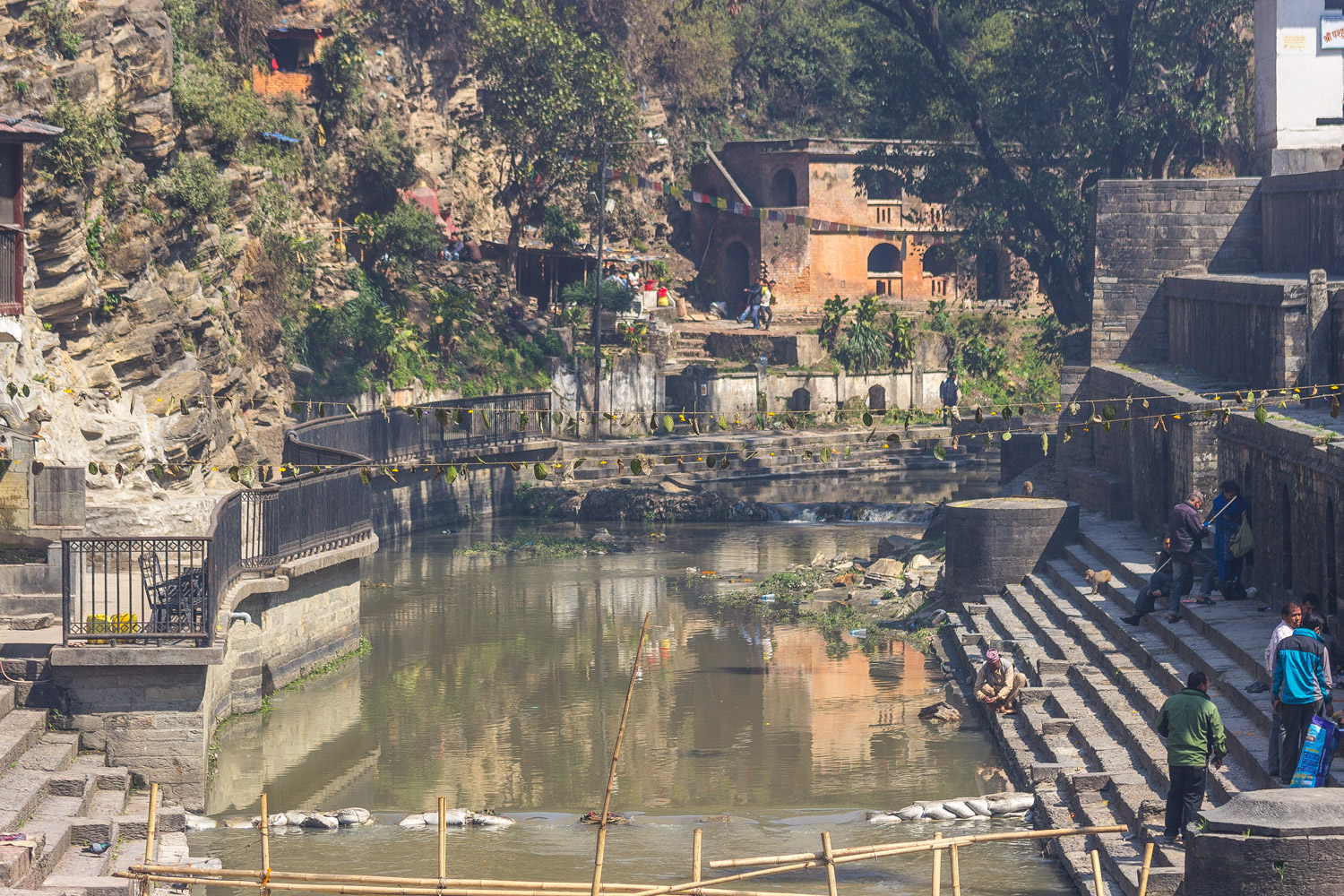
Pashupatinath is the most modern crematorium. The lighting is provided by solar panels.

Nepalese “sadhus.” Like in Varanasi, there are many brightly dressed mendicants sitting along the riverbank here, collecting fees for photographs with them.
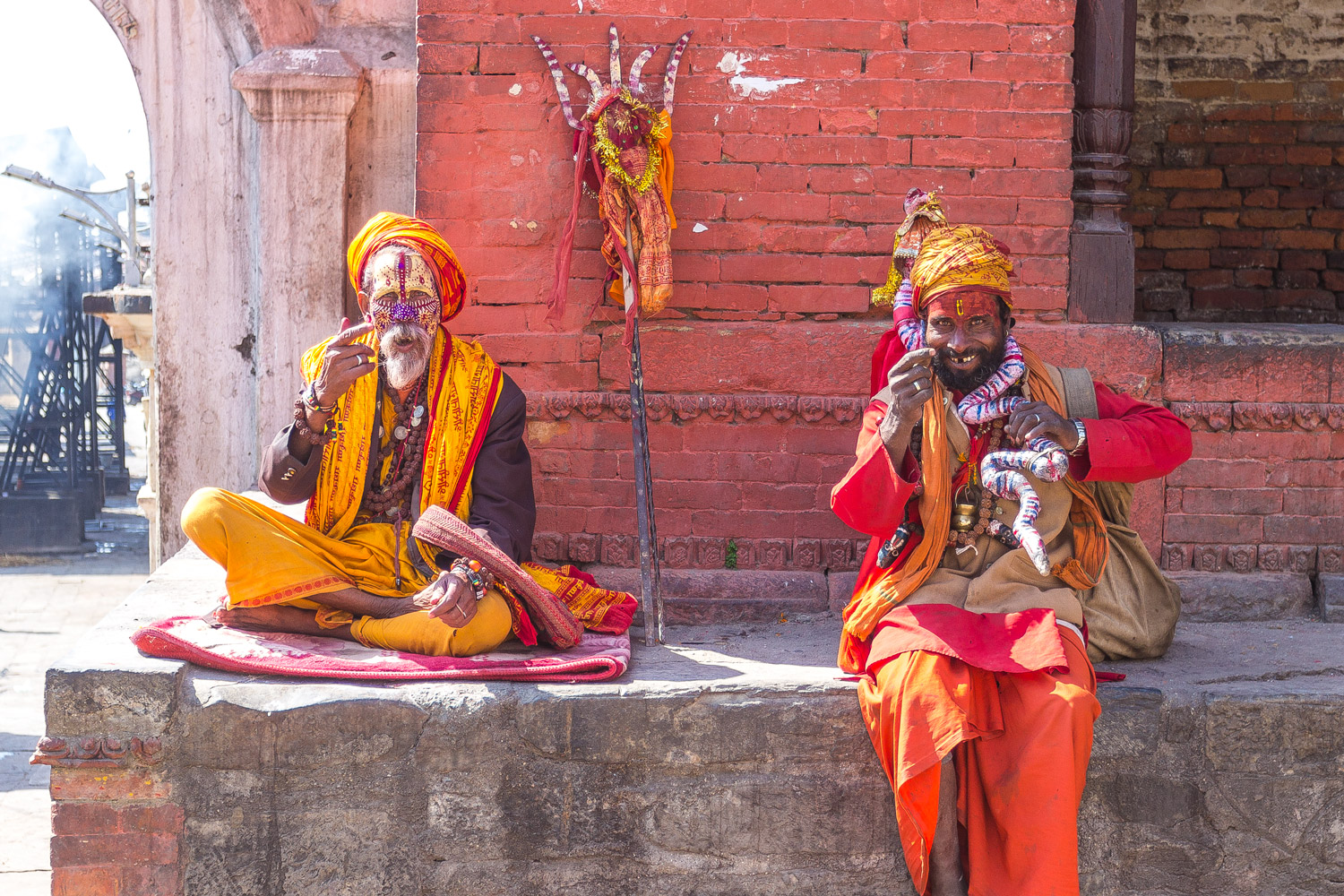
It’s quite difficult to discreetly capture them. They settle in secluded corners where telephoto lenses cannot reach, and it’s not possible to approach closely with a camera — they immediately cover their faces with their hands and ask for money.

Monkeys thrive in the temple. I still don’t understand where they came from in Nepal. It is quite cold here year-round.

Neat rows of cremation platforms. Unlike the ghats of Varanasi, filming the funeral process in Pashupatinath is officially allowed, as long as you simply purchase a ticket.

Hindus bury without coffins. Men and widows are wrapped in white cloth, women with living husbands are wrapped in red. They place an orange cloth with mantras on top. A thick garland of flowers is hung around the neck. The body is carried to the cremation site on a stretcher.

Only men carry the deceased. Women have minimal participation in the ceremony, observing it from a slight distance.

The eldest son of the deceased dresses in clean, white clothing.
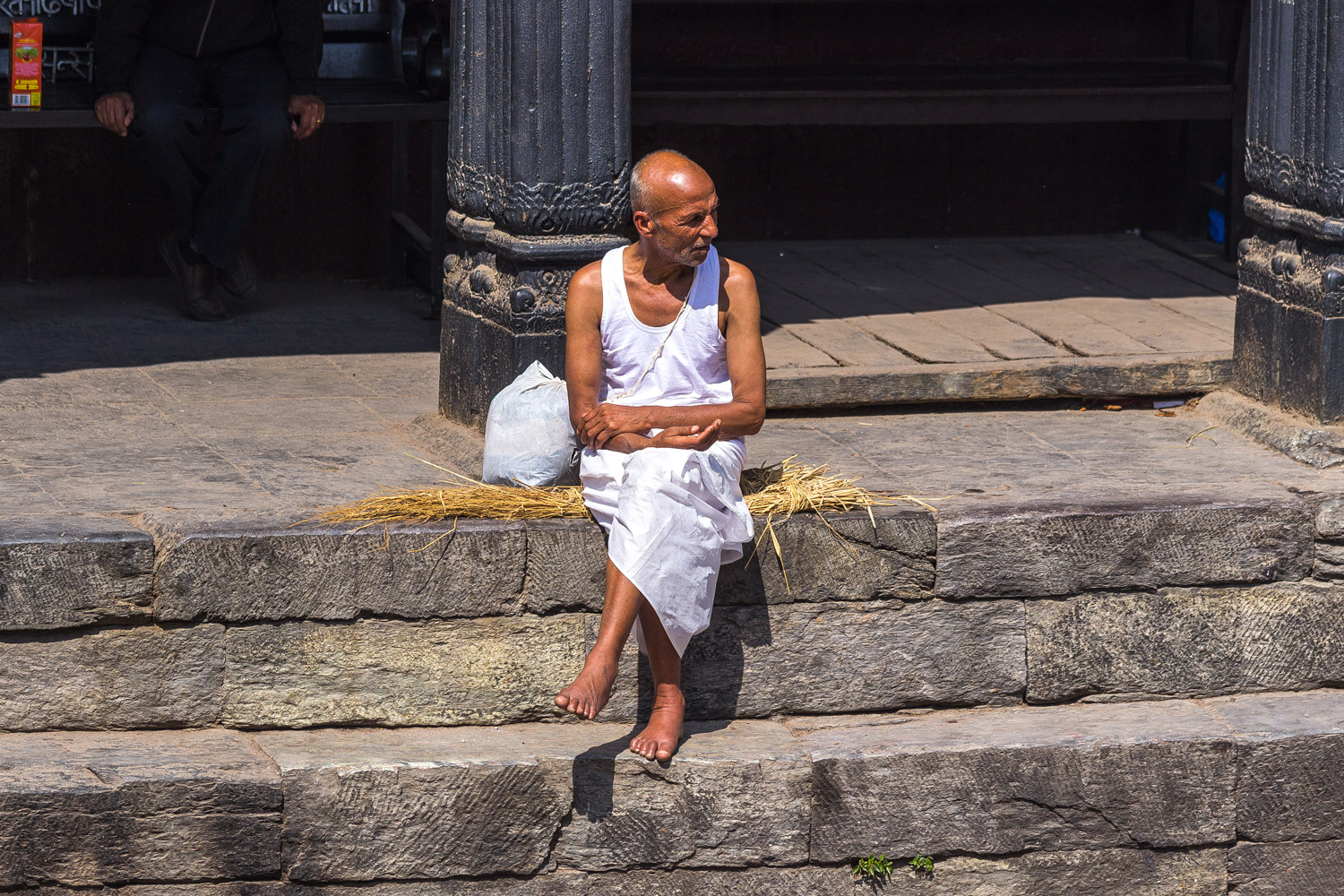
He performs the ritual of purification.
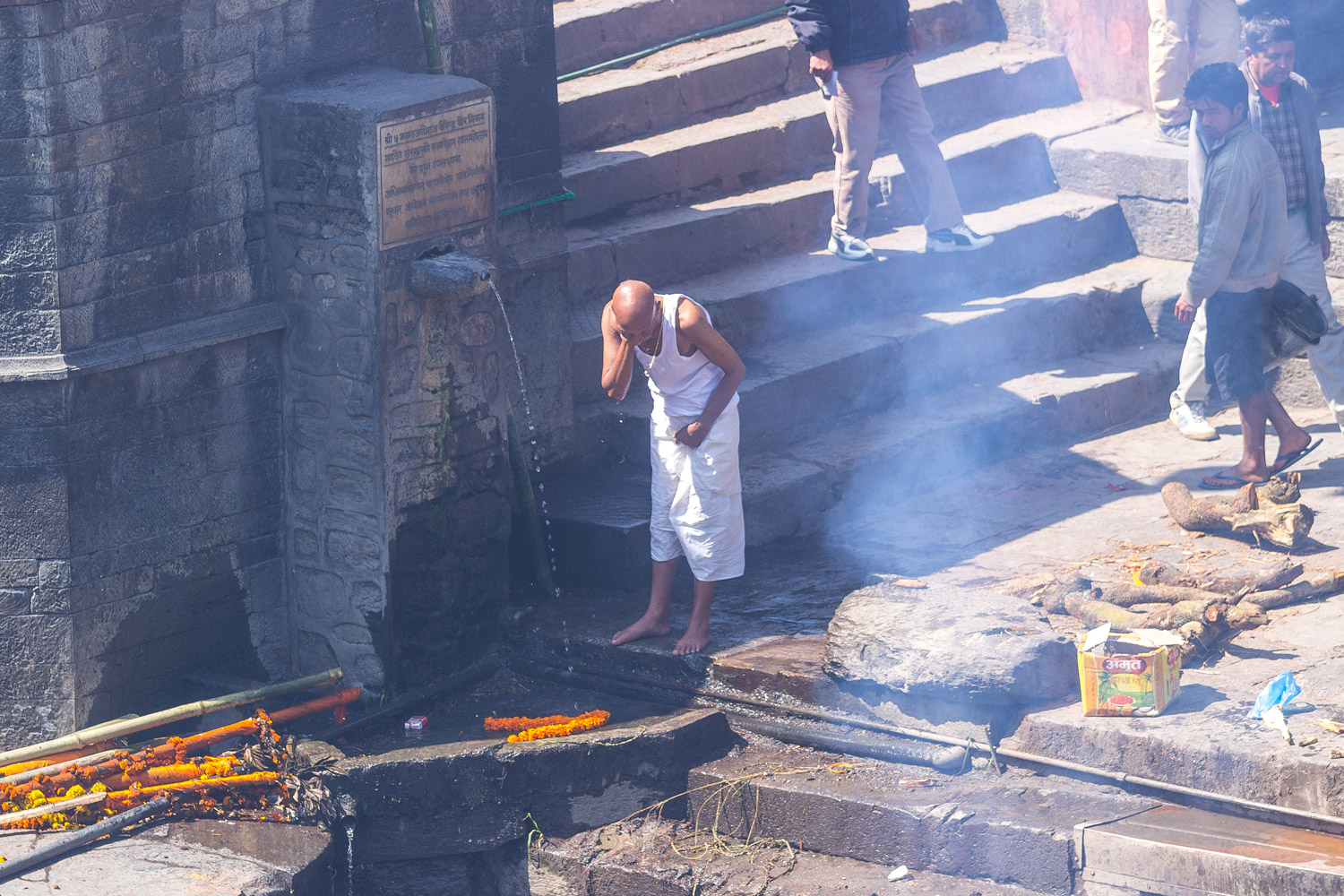
He shaves his head completely.
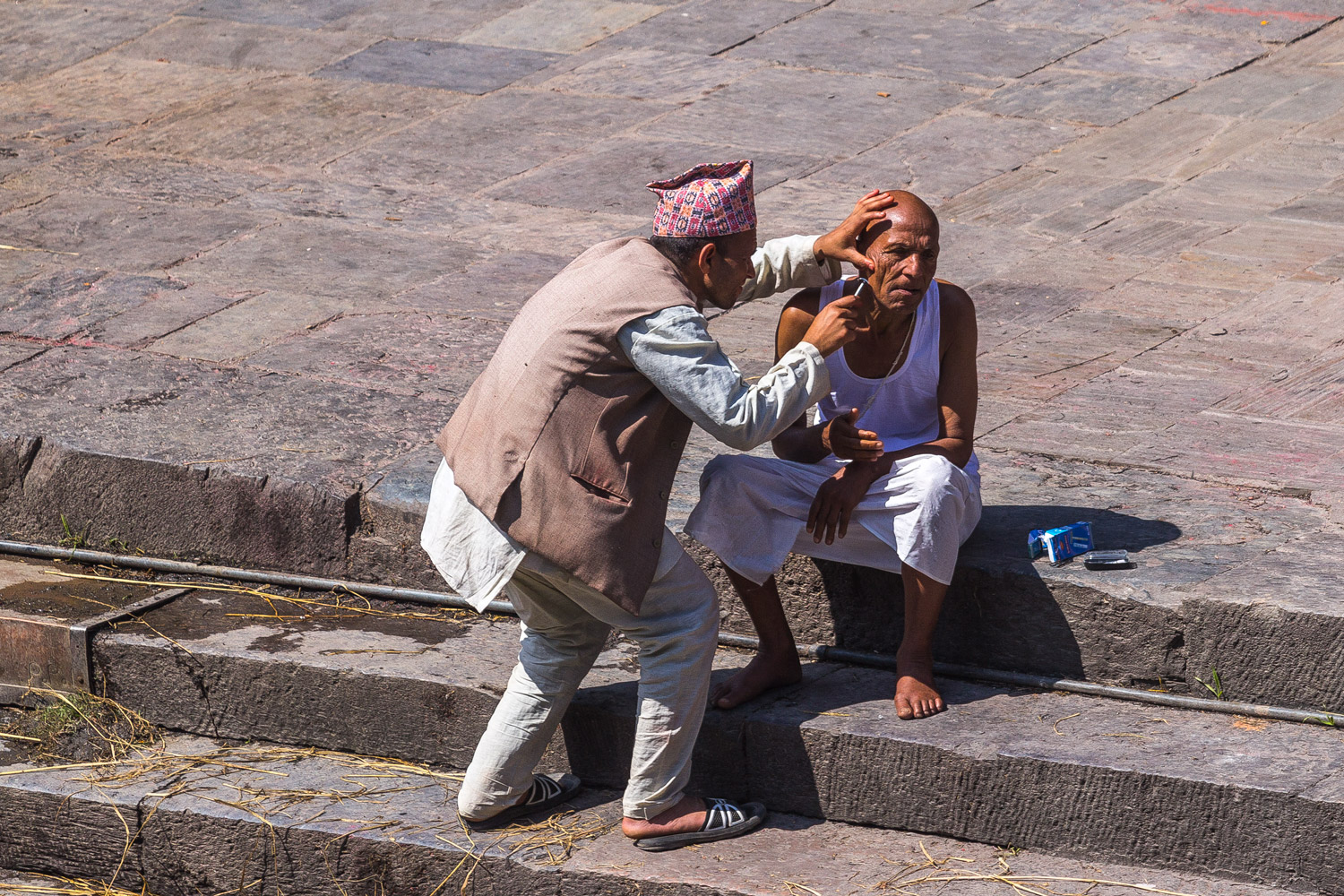
He arranges rice balls around the future pyre. According to tradition, the eldest son has a significant role in funerals. He is supposed to walk ahead of the stretcher with the deceased, distribute alms, and carry a pot with burning embers to ignite the pyre. In practice, none of this is usually observed.

Before placing the body on the pyre, it is carried to a gentle platform next to the river. The platform is washed by splashing water onto it.
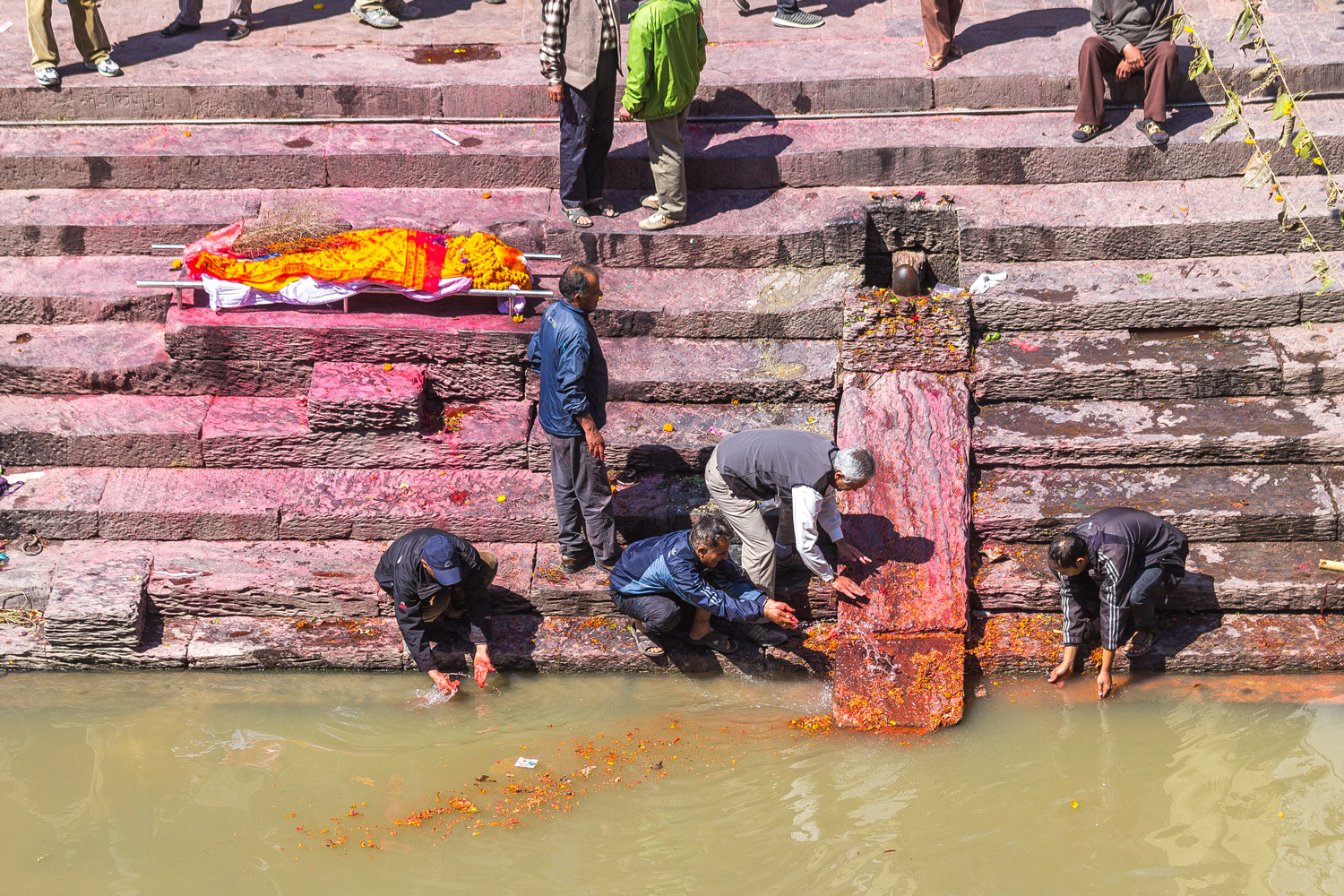
Then the body is transferred from the stretcher to this platform.
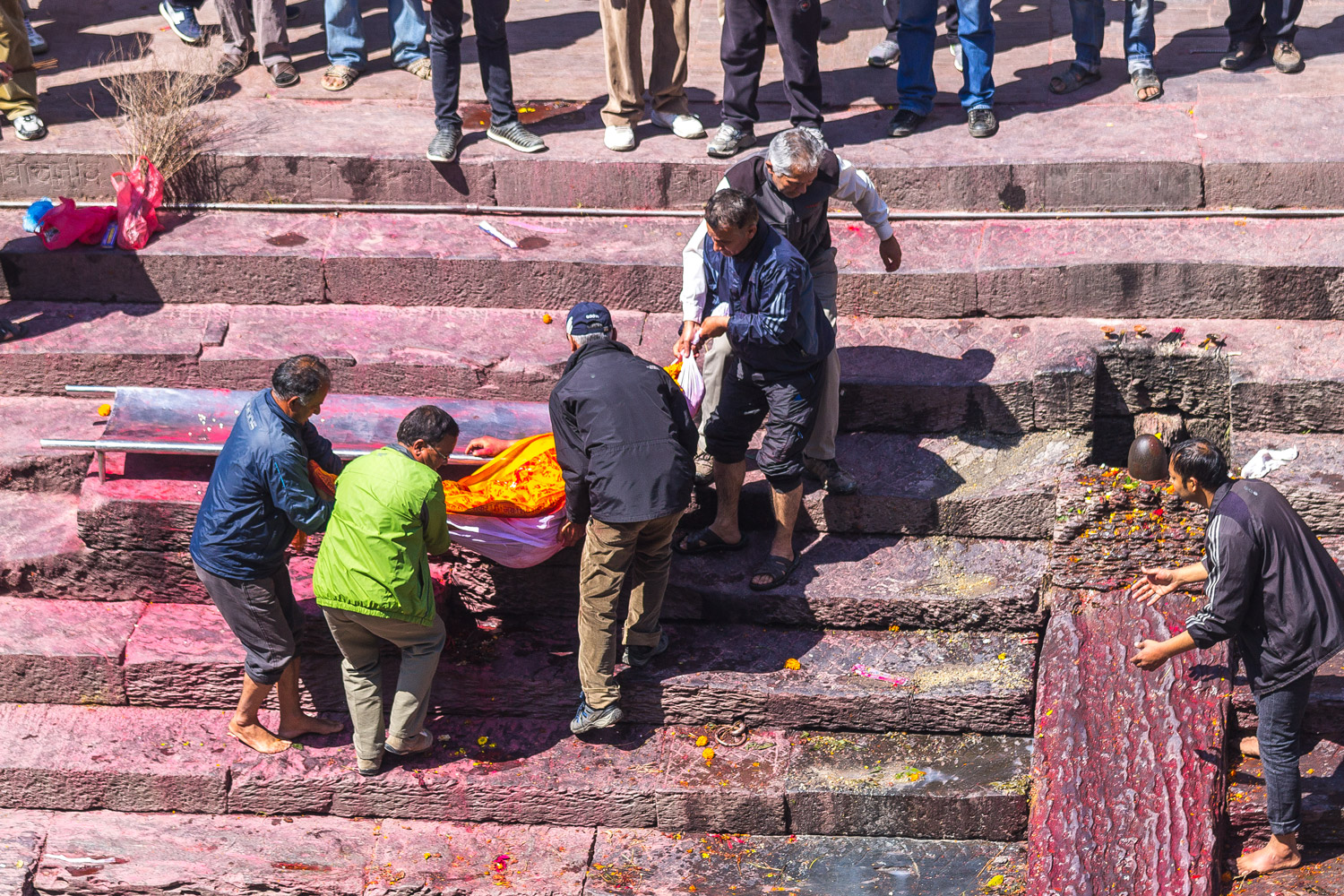
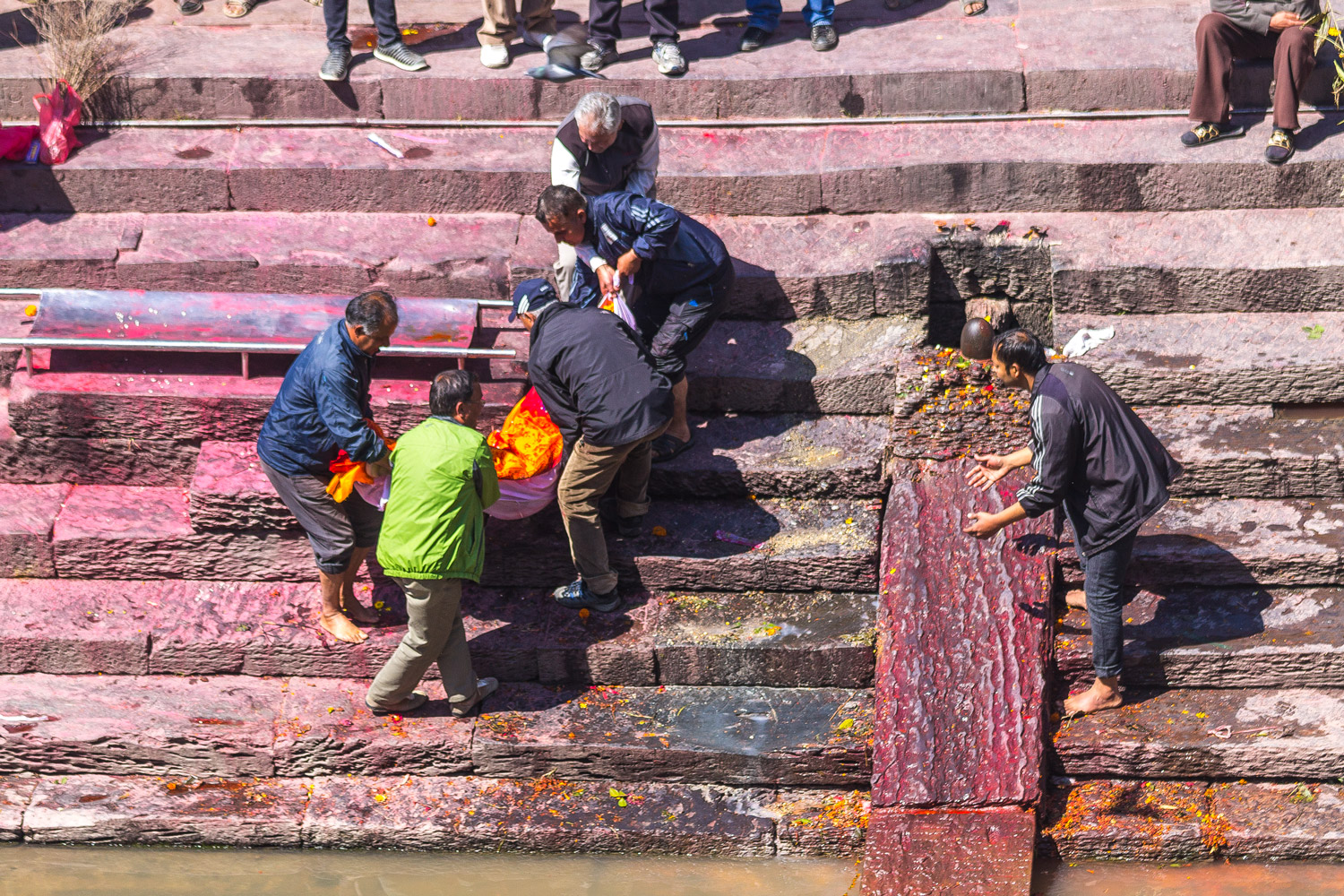
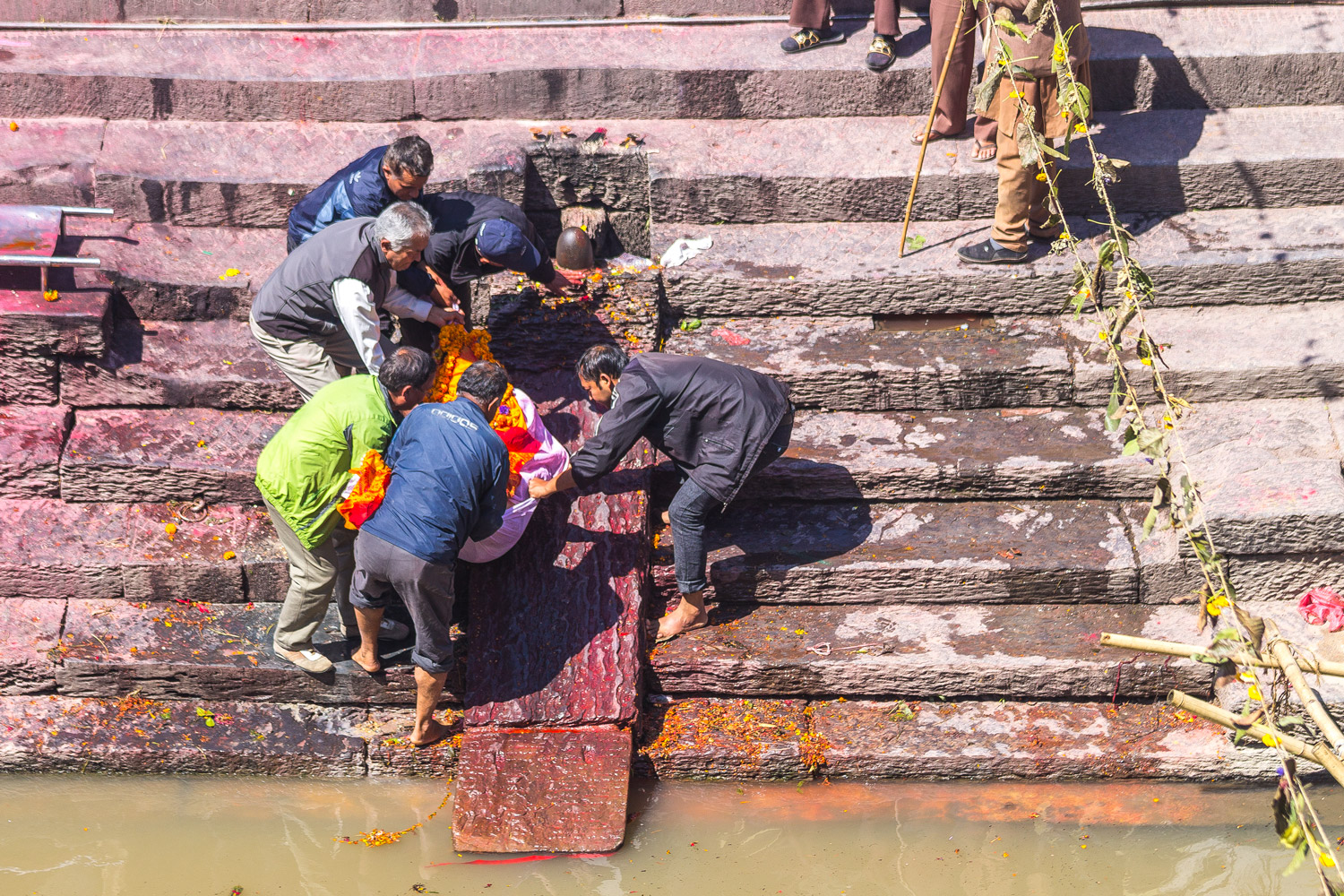

They remove the silk shroud from the face and perform a brief ritual ablution, pouring water from the Ganges over the face. The main procedures are behind them, and it is prescribed to wash the body of the deceased in a mixture of milk, yogurt, honey, and oil. The big toes should be tied with a string, and the hands are folded together palm to palm. Of course, nobody actually does any of this.
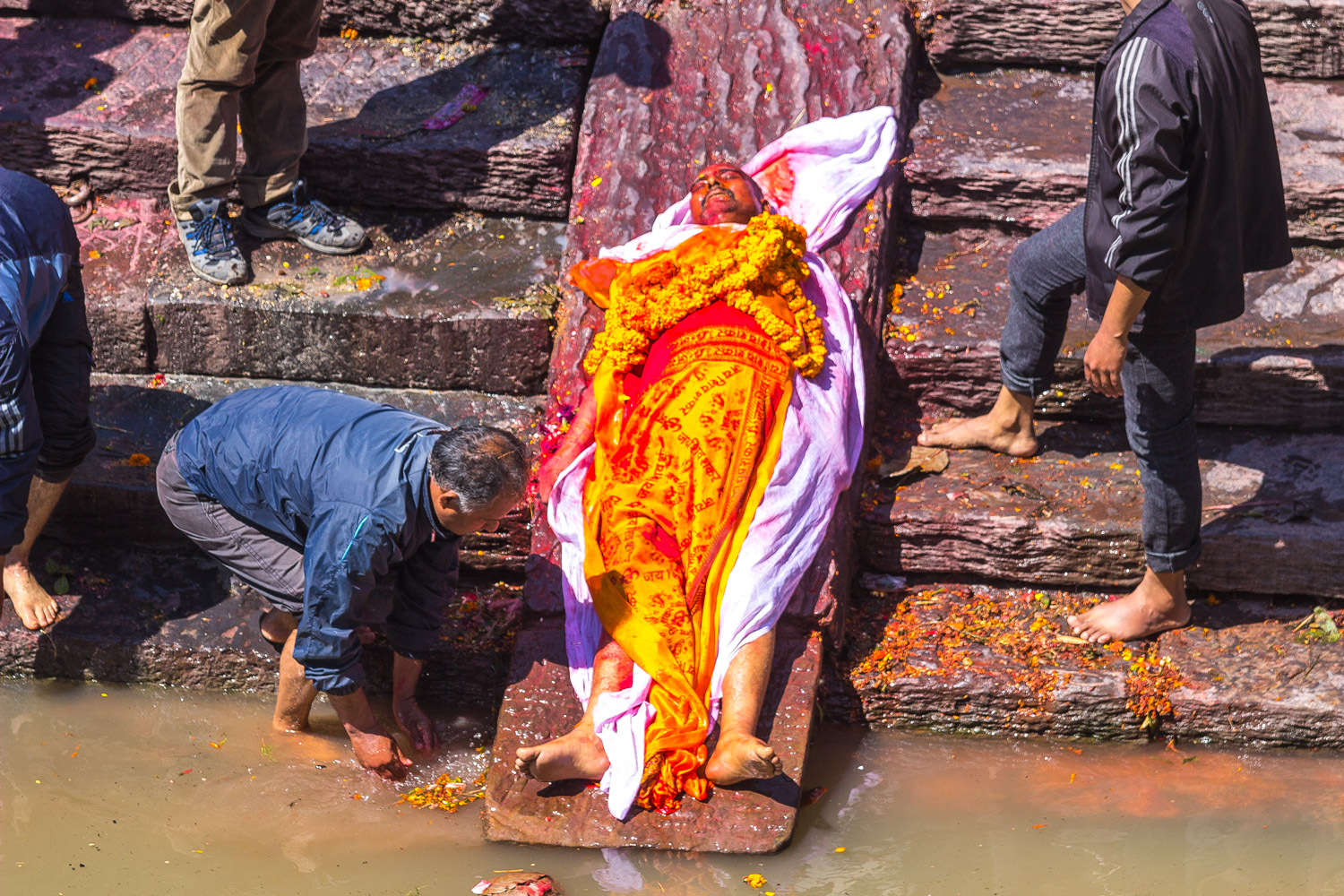
Traditionally, the body should be sprinkled with fragrant substances and have sesame seeds or basil placed in the mouth. When a person from a less affluent family passes away, spices straight from the packet are used.
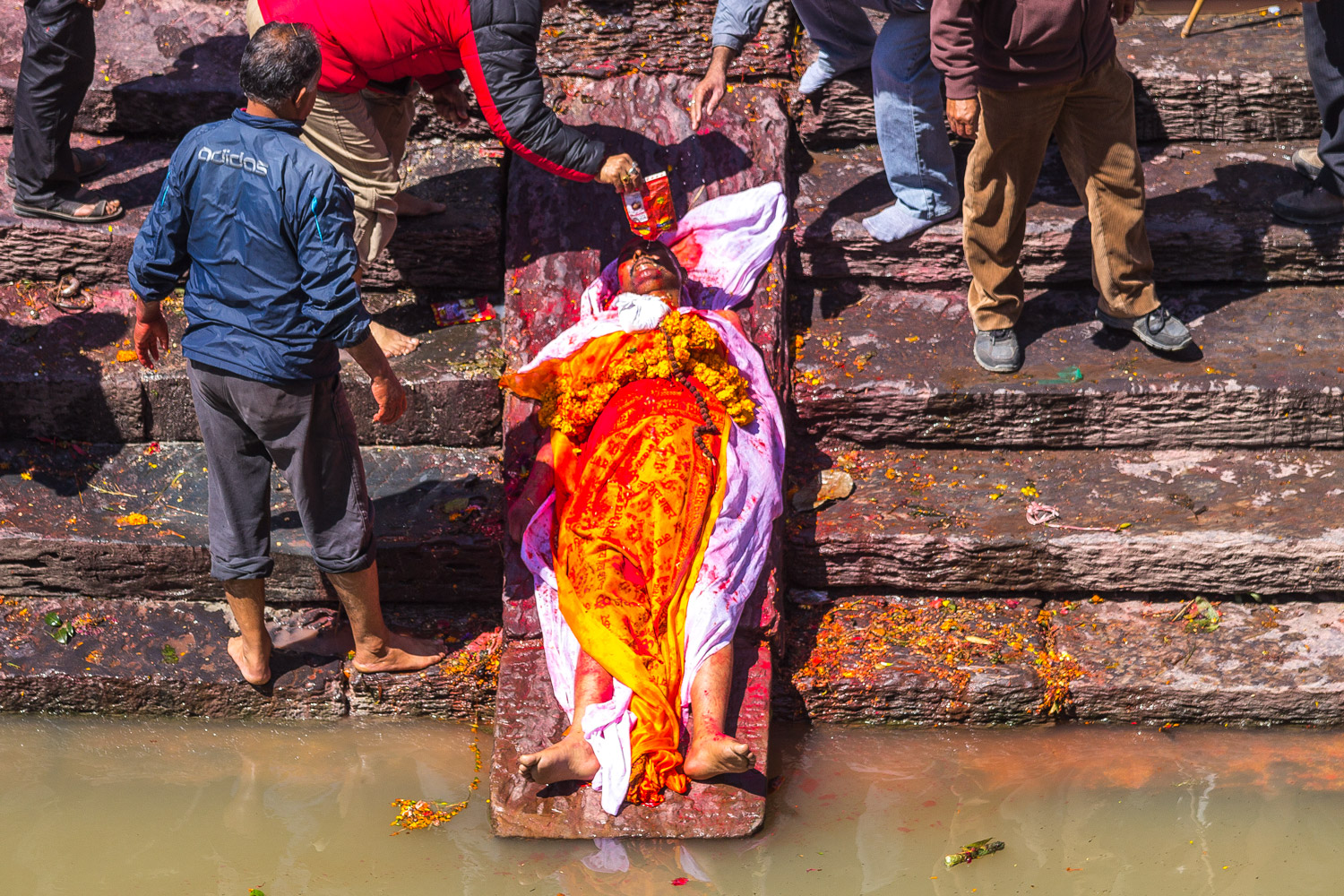
While the men prepare the body for cremation, the women pour something into the Ganges from a sack. It is supposed to be personal belongings of the deceased according to tradition, but in reality, the sack contains some garbage.
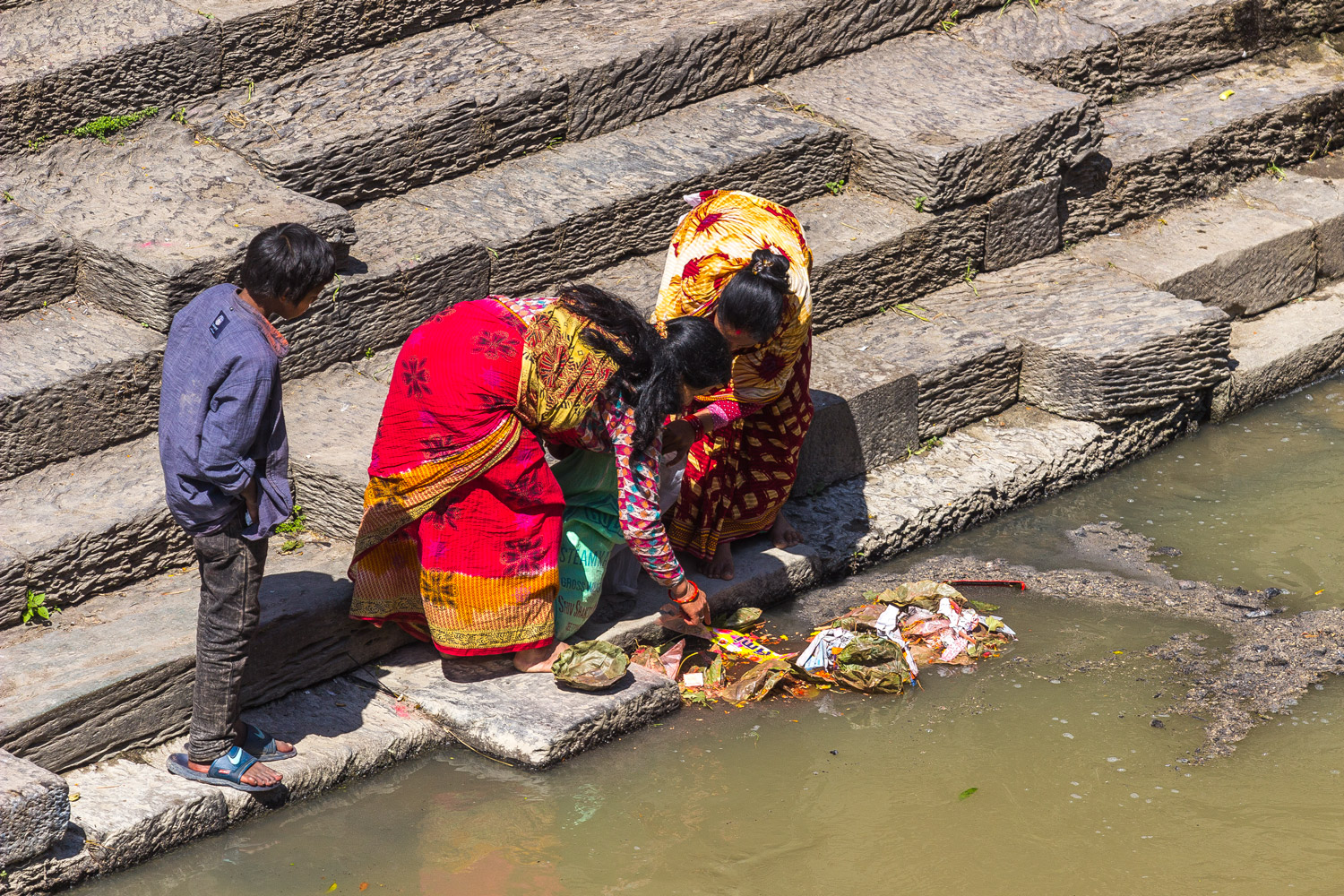
I managed to spot ashes of uncertain origin (burned personal belongings?), leaf plates, some packaging from incense, and a cellophane bag.
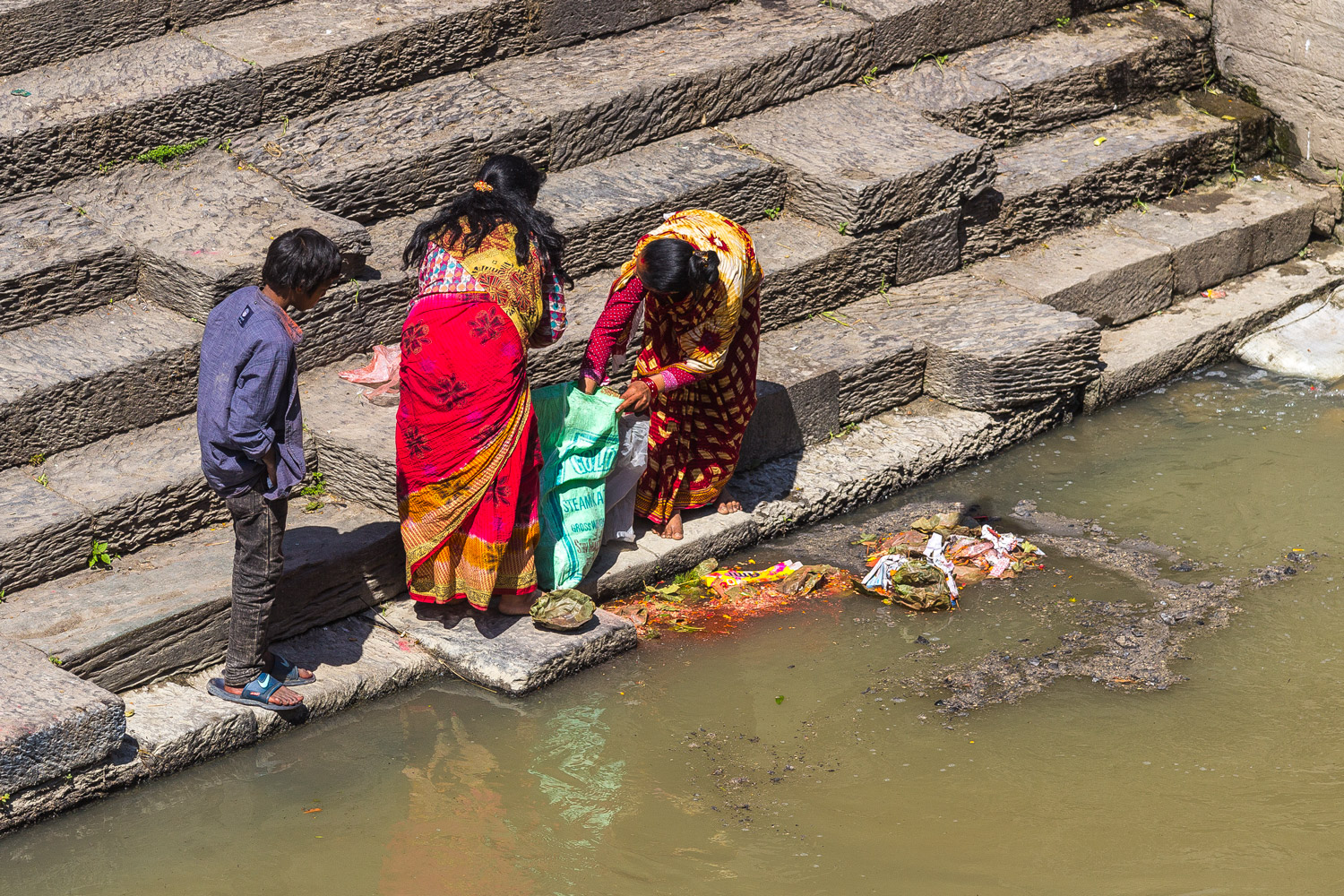
One of the women is washing something while seated on pontoons. Scattered garbage floats along the river.
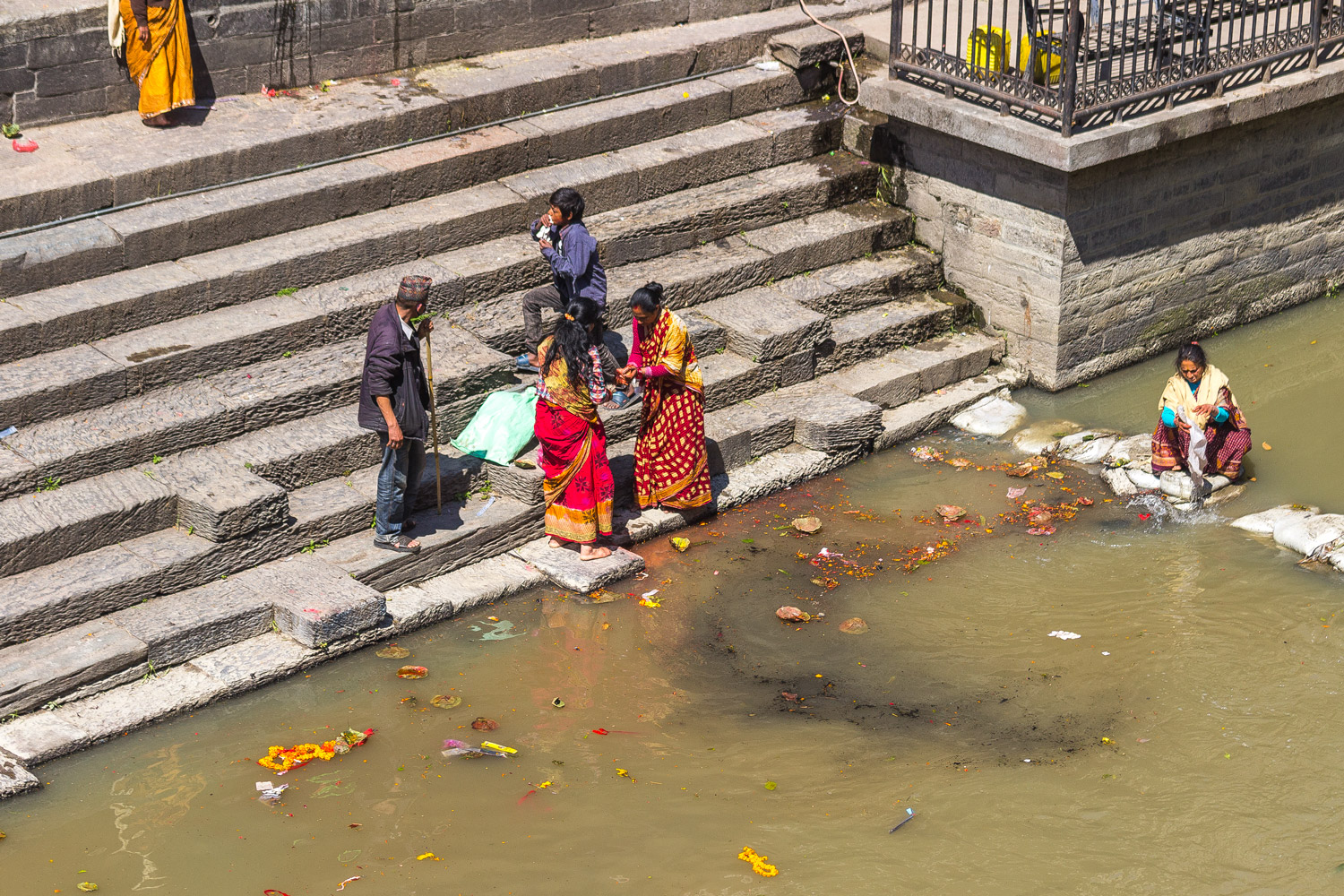
Meanwhile, the pyre platform is ready. They wet the firewood with water to make it burn longer.

The body is placed back on the stretcher and carried to a wooden pedestal. It is prescribed to position the body with the feet facing south, but they place it facing northeast.
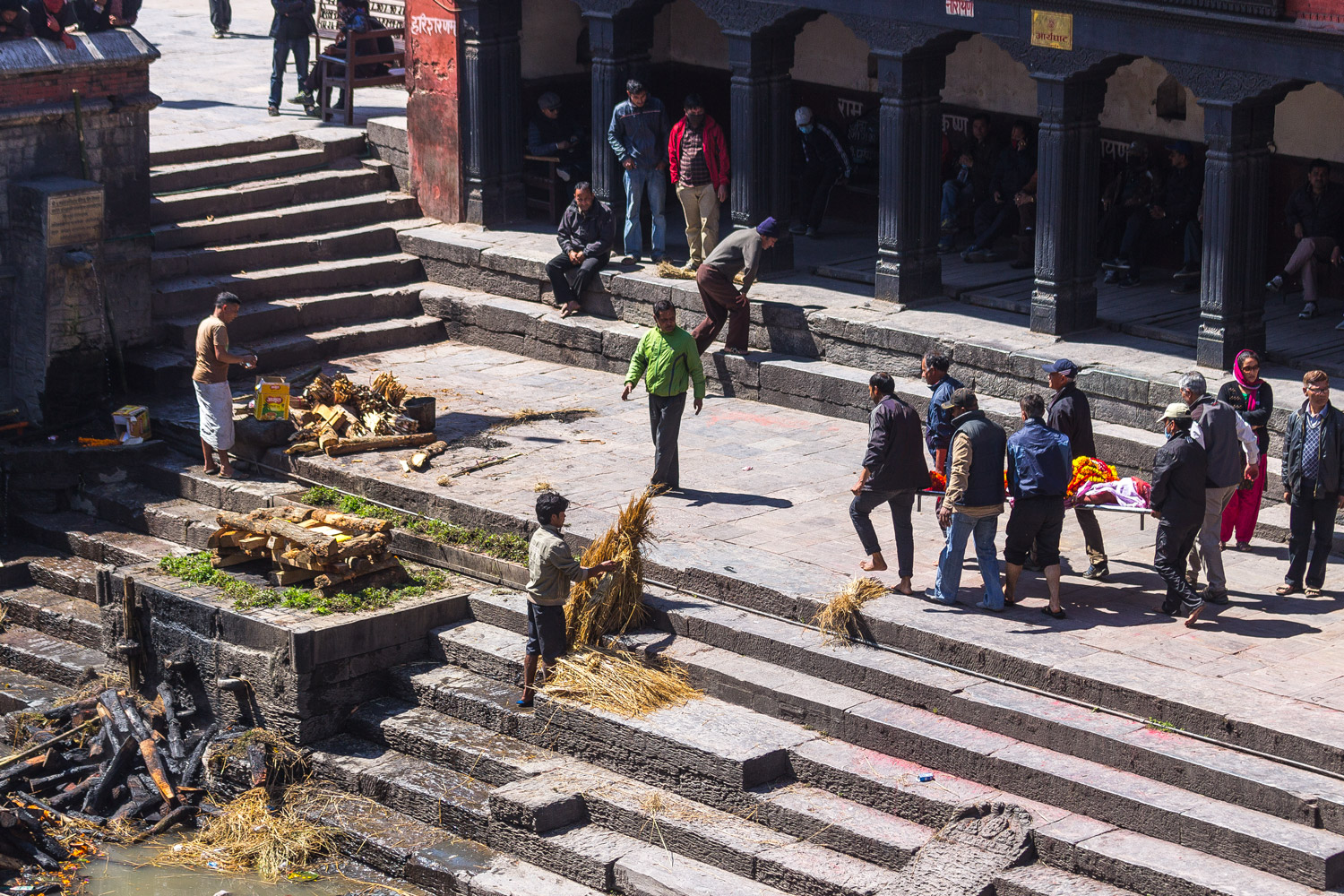
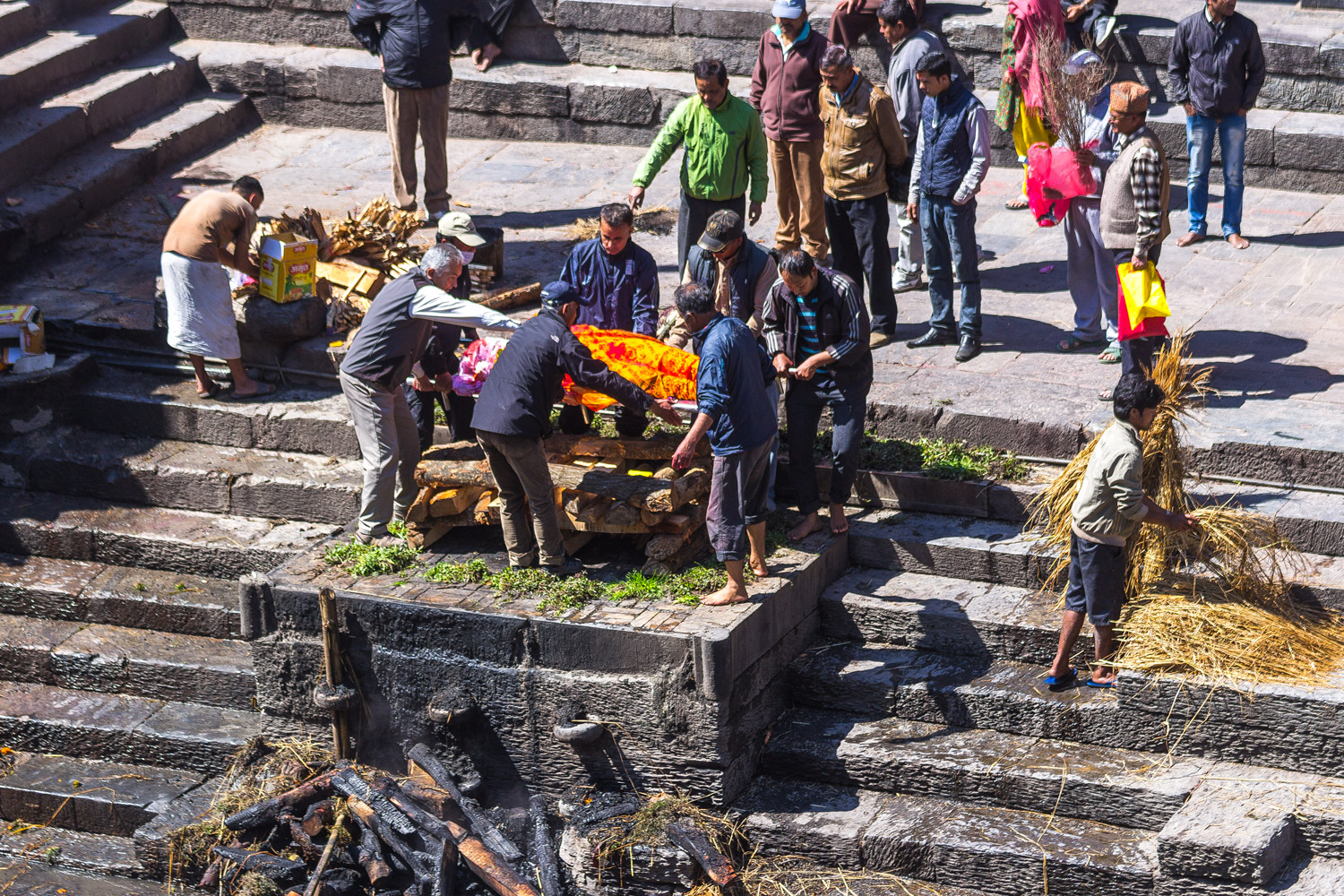
Cloth pouches with personal belongings are placed on the chest of the deceased.

Sesame seeds or rice grains are placed inside the mouth.

It may seem that the person with the scroll on the right side of the photo is reciting mantras as tradition requires. In reality, it is more likely that he is holding a funeral instruction manual in his hands. At any rate, he did not recite any mantras. The reality deviates from traditions.

A lit bundle of firewood is placed on the chest of the deceased. They take final photographs with a mobile phone.

On the final journey.

The body is covered with firewood.
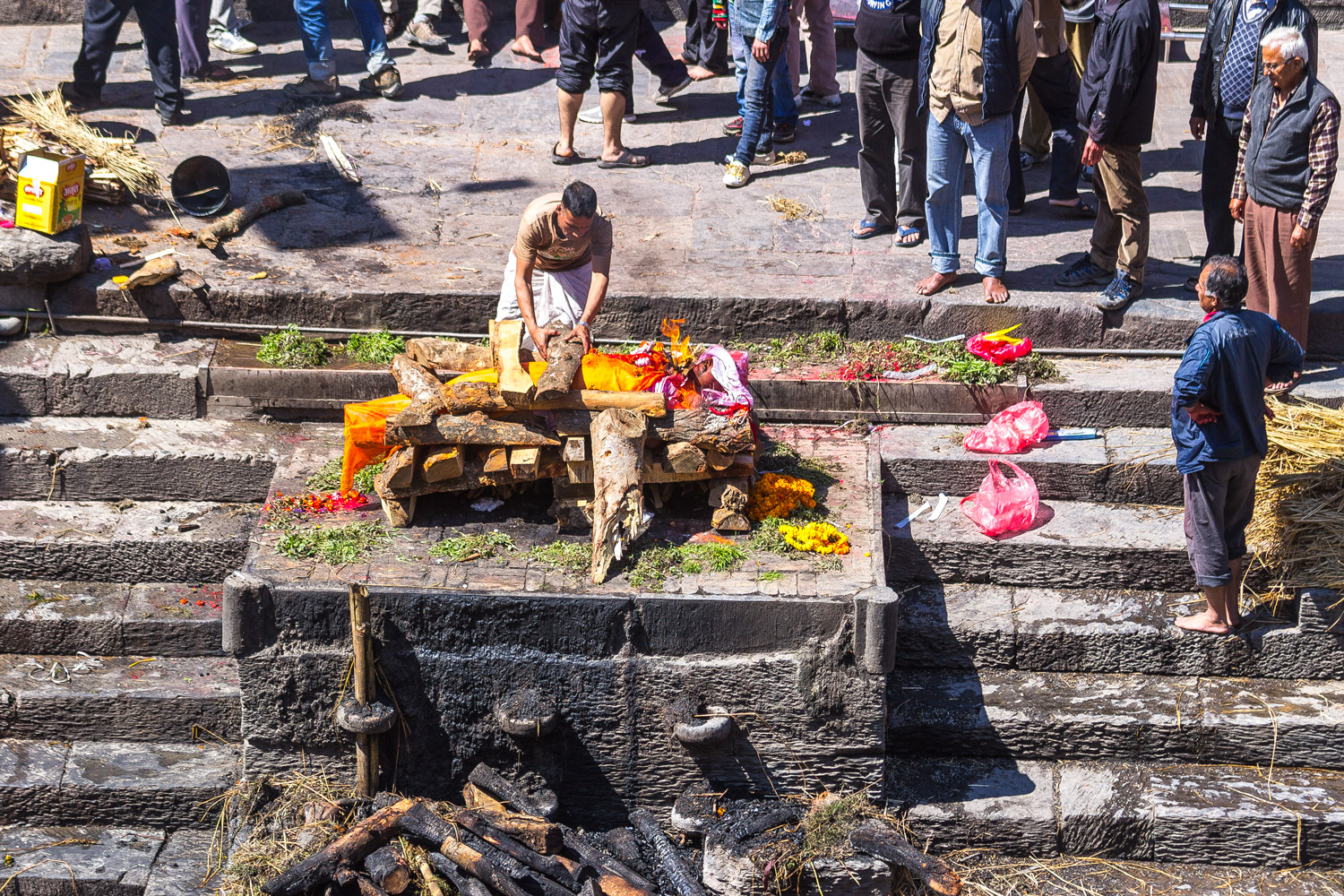
Buried in hay.
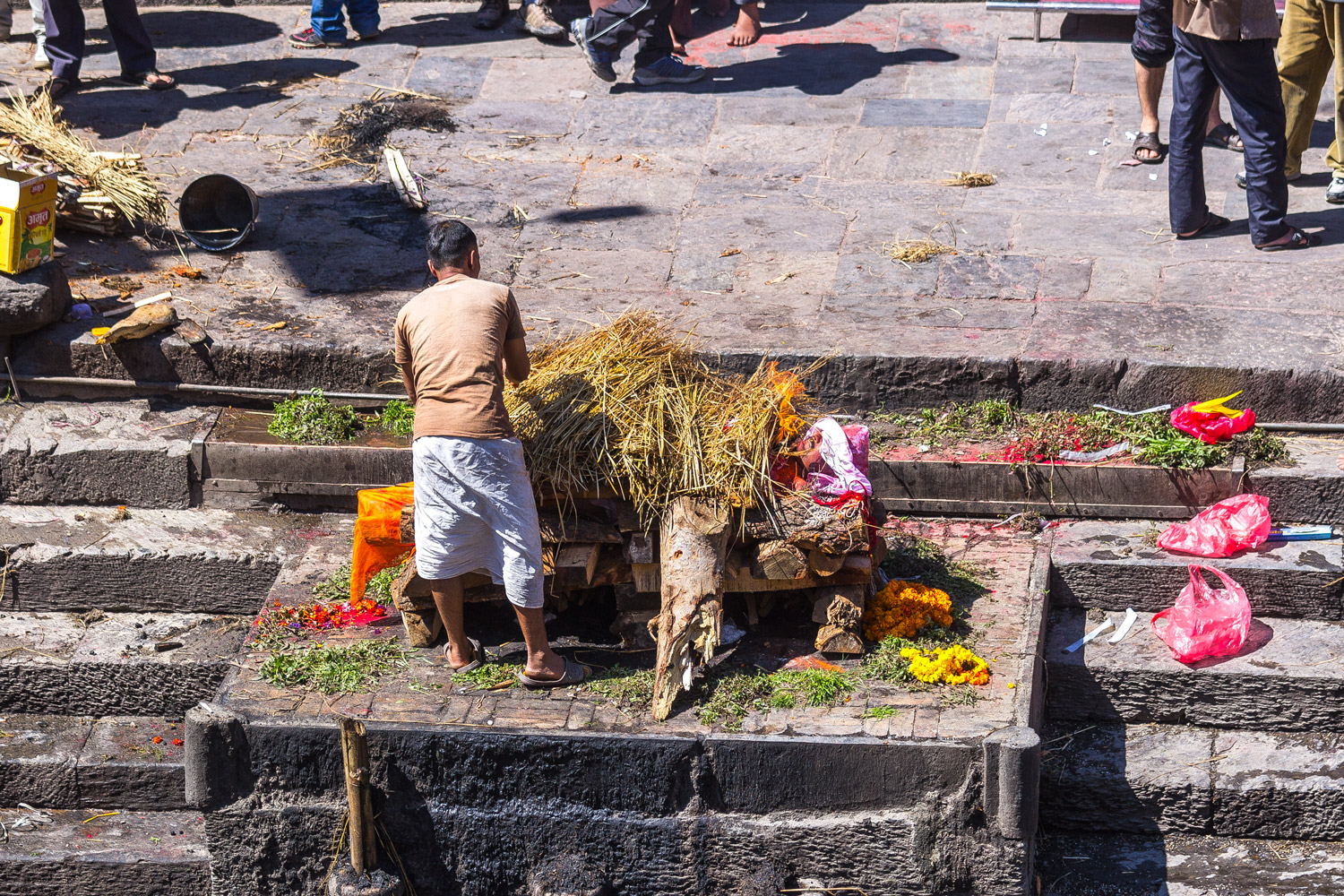
Smoke from wet grass fills Pashupatinath.

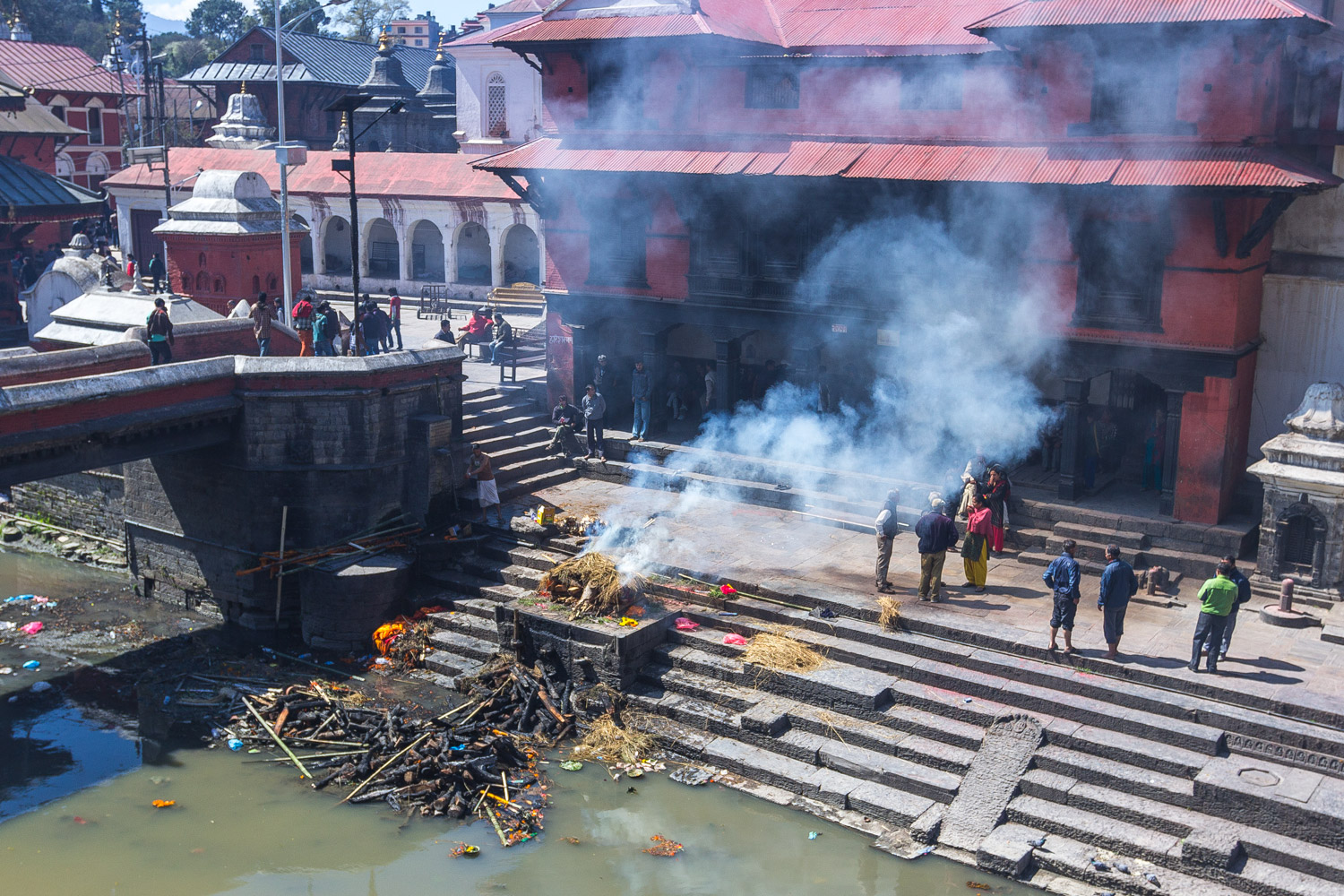
Tradition dictates waiting for the complete burning of the body. There is one important moment — during the cremation process, the skull of the deceased should crack with a distinct sound. Through the cracked skull, the soul is liberated. If the skull does not crack on its own, the son of the deceased does it by piercing it with a bamboo stick with a sharp metal tip.
The author did not have the opportunity to witness anything like this. Reality is still far from traditions.

When the bonfire burns out, only ashes will remain of the buried individual.

The temple worker will unceremoniously dump the coals from the pedestal into the river.

The bonfire will be extinguished with water from the river.

The next family will build a new bonfire. Cremation in Kathmandu does not stop for a minute.

